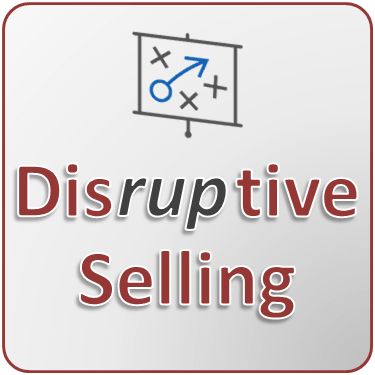 In a 2012 Harvard Business Review article titled “The End of Solution Sales,” authors Brent Adamson, Matthew Dixon, and Nicholas Toman identified a new way of selling being practiced by the cream of today’s sales professionals—usually B2B salespeople attempting to land complex deals.
In a 2012 Harvard Business Review article titled “The End of Solution Sales,” authors Brent Adamson, Matthew Dixon, and Nicholas Toman identified a new way of selling being practiced by the cream of today’s sales professionals—usually B2B salespeople attempting to land complex deals.
These prominent authors identified a small percentage engaged in what they call “insight selling.” In contrast to the classic “solution sale,” in which salespeople engage with purchase agents to discover salient needs and align their solution with those needs, this new breed of insight seller identifies needs that potential buyers may not even be aware of yet. They identify opportunities in areas of flux, offer “provocative insights” about the customers and their business models, and become “buying coaches” for their clients.
I call this kind of practice “disruptive selling,” and the small percentage of salespeople who can actually do it are testament to its difficulty. The bulk of activity for most salespeople remains solution sales, and seasoned professionals still endeavor to attain proficiency just on that plateau. The ability to actually execute disruptive sales is very limited across the world.
The appeal of disruptive deals is considerable: When recognizing the rise of disruptive forces or innovations in a particular company’s market, seizing the window of opportunity in which that company can become the disrupter instead of the disrupted can have huge rewards. Consider Kodak’s failure to run with the digital camera. They sat by while other players gobbled up their market, forcing them to shutter their camera business for good in 2012. Disruptive, or insight sales, thrives on the premise that today’s problems aren’t going to be tomorrow’s problems. Identifying them ahead of the curve is lucrative.
However, this is easier said that done. For a vast majority of companies, solving current problems is a highly defensible outlook. Incremental improvements are usually expected and rewarded. It is often far more sensible to ask how we can be more efficient in the next six to 12 months rather than the next five to six years. We might like exciting ideas on the horizon, but they can feel too amorphous to justify expenditures. On the individual level, where people often change positions every two to three years, risking a career for payoffs on a five- to six-year horizon is a difficult proposition.
Synthesizing a Future of Value from Today’s Legacy-Based Reality
When attempting transformational deals, salespeople must keep this front of mind: disruptive deals fail because judgments are made based on legacy facts. For example, let’s consider the digitalization of hospital and medical records. The inability to search data effectively among provider networks is a problem that results in poorer care and higher costs, especially in the U.S. There is no hospital administrator who wouldn’t like to improve this. But there is a tremendous constraint: The solution provider that can deliver the infrastructure to solve the problem will be judged against the legacy backdrops of the solutions in place today. What is available today? What will it cost today? Few buyers can escape these concerns, and this is where most disruptive deals are quickly snuffed out.
To start selling solutions for problems that clients don’t even know they have yet, more than a new breed of high performer is required. You also need a disruptive or visionary agent across the table. These are the “skeptical change agents” that Adamson, Dixon and Toman cite in their original article, as opposed to the “friendly informants” that salespeople traditionally seek out: the article went on to profile seven types of stakeholders in support of a proposed strategy for finding buyer-side agents to evangelize for and with you.
We met such an agent while engaged on the behalf of a solution provider who was hoping to help a European public sector entity improve its cost performance and service delivery. The institution was being served at the time by a combination of vendors who were doing a fairly good job of flogging incremental efficiency gains out of an inherently inefficient legacy infrastructure. We had a customer-side champion who wanted to “walk the walk” in terms of transformational projects. But our client was having a difficult time figuring out how to bid out the project. What everybody really wanted to do was throw out the old system and rebuild everything from scratch. However, that wasn’t a viable option.
We worked with our client to fashion a bid that accounted for outsourcing services for future infrastructure, positioning solutions that were comparable in price with the legacy solution, clearly outlining the risks, and also presenting the cost and benefits of alternate paths. Our client’s client knew that the old way would eventually crumble, but our client still needed to fashion a convincing quantifiable value argument to connect the dots between legacy thinking and a bright future full of bold solutions.
Our client won the deal. When selling whole-hog substitutes to customers, you must, side-by-side with your visionary champion on the client side, use your unique strengths to design disruptive replacements that provide many times more value than their current processes. Once you have agreement on the value of that investment, you have entered a realm in which there is no competition. You aren’t biting and clawing competitors in price-based dogfights because you have designed a future solution that is demonstrable, achievable, and unique.
You can’t do it alone. For any of this to work, you need a particularly keen and brave person on the client side whose fire in the belly can be given form by your carefully articulated—and quantifiable—value argument. The future of disruptive deals belongs to the client who can see the future and the provider who can help draw that vision in detail.



